
Davis, Aron. The Poker Blueprint
.pdf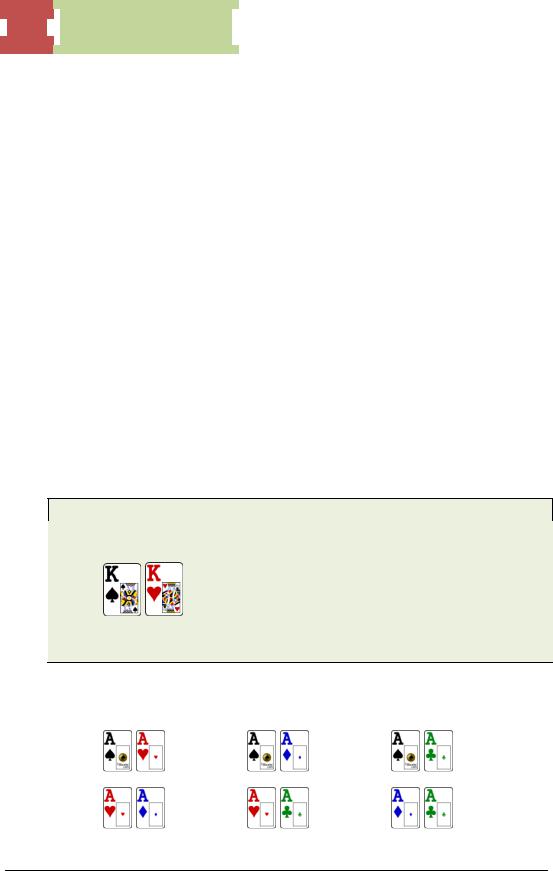
 19
19  Math is Easy
Math is Easy
Hand Combinations
A hand combination is any two cards that you are dealt, such as JT spades. This is one of my favorite math topics in poker because learning hand combinations, or simply
“combinations”, will automatically make us better hand readers. It allows us to narrow Villain’s hand range based on his actions, our cards and the community cards. With that said, let’s get some facts out of the way.
1.There are 1,326 combinations in No-Limit Holdem.
2.A set has 3 combos.
3.Two pairs have 9 combos.
4.Pocket pairs have 6 combos.
5.A pair + kicker has 12 combos.
6.Unpaired cards have 16 combos.
7.Any two specific suited cards have 4 combos.
8.Any two specific cards have 1 combo.
This may seem intimidating, but it’s really not as hard as it looks. Let’s go over a quick example to illustrate this.
100 NL – 6 max. 100BB effective stacks.
A tight player raises from UTG and you 3-bet from the Button with
He 4-bets you all in. How many combinations of AA does he have?
There are 4 aces left in the deck. Based on the list from above, there are exactly 6 combinations of AA. If we manually count them out, we have
© 2010 Aaron Davis and Tri Nguyen - All Rights Reserved.
http://www.DailyVariance.com
19
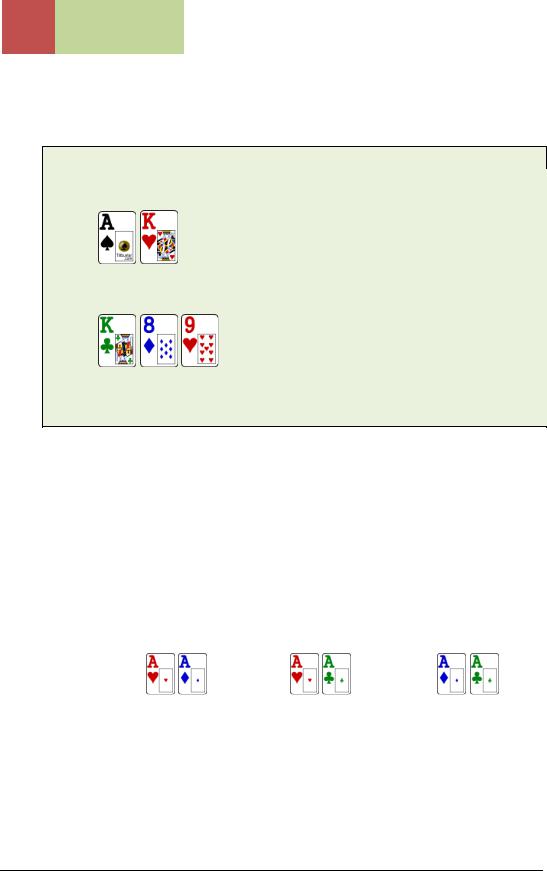
20 Math is Easy
That’s simple enough. Now let’s go over a slightly more complicated problem and see how things change when we hold one of the cards on the board.
100 NL – 6 max. 100BB effective stacks.
You raise from UTG with
and a TAG player calls from the SB. The flop is
He checks to you. You bet 2/3-pot and he check-raises to 3x your bet size. How many combinations of sets, two pairs, AA, AK and straight draws are in his range?
We’ll need to make some adjustments because we hold one of the cards on the board.
1.Sets – 7 combos: 3 combos for a set of eight, 3 combos for a set of 9 and 1 combo for a set of kings (you have one king and there’s one king on the flop).
2.2 pairs – 2 combos: Since we don’t think he’s going to be calling our UTG raise with 98 offsuit, we can subtract those combos from his range. There are 4 combos of 98 suited preflop. On the flop, he can only have 2 combos for 98s (98 clubs and 98 spades). We also remove K9s and K8s from his range because TAGs don’t call UTG raises from the blinds with those hands.
3.AA – 3 combos: Again, there can be 6 combos of AA, but since we have one of the aces in our hand, he can only have the following 3 combos.
4.AK – 6 combos (3 aces left x 2 kings left = 6 combos): A pair + kicker usually has 12 combos. However, we hold a king and an ace so that takes away several combinations.
5.Straight draws – 4 combos of JT suited (JT clubs, JT spades, JT diamonds, JT hearts): We can safely assume that Villain will not call an UTG raise with JT offsuit from the blinds. I left out T7s and 76s because he is less likely to call an
© 2010 Aaron Davis and Tri Nguyen - All Rights Reserved.
http://www.DailyVariance.com
20

21 Math is Easy
UTG raise with those hands from the blinds in a heads-up pot. Even if he does, he will more likely check-call.
If we know he never check-raises with a straight draw here, then that decreases the chances that he has JT and increases the chances that he holds two pair or better. Thus, the correct play is to fold. Another option is to call and see what he does on the turn. If he bets again, then we’re likely behind and can fold. If he checks, then we can check behind for a cheap showdown. If you’ve seen villain overvalue his KQ and check-raise here, you can call the flop more liberally.
As you can see, hand combinations allow us to focus on villain’s hand range to figure out how likely he is to have a certain hand. This does not replace hand reading in any way. It should be a great supplement, however, to dissect your opponent’s range.
© 2010 Aaron Davis and Tri Nguyen - All Rights Reserved.
http://www.DailyVariance.com
21
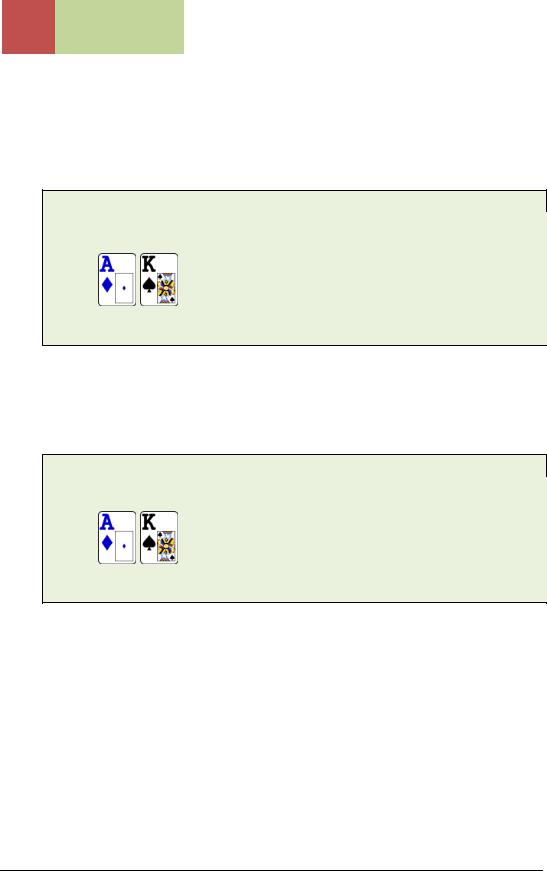
22 Math is Easy
Hand Ranges
A hand range is a group of holdings that one player is likely to have based on previous history and the actions in a hand. Let’s look at some examples.
100NL – 6 max. 100BB effective stacks.
Villian is a TAG and raises to $4 from UTG. You 3-bet to $14 from the BTN with
He 4-bets you all-in, and you call.
His hand range here is very strong, which means that a lot of his holdings include TT+ and
AK. Versus that range, our AK is a 40 percent underdog. Since we know he’s a TAG, he is unlikely to be doing this with AQ/AJ or 99. So, we stand to lose money in the long run if he shows up with this range every time in this situation.
Now, let’s say a very bad, maniacal player raises $4 from UTG and you 3-bet again to $14 with
He 4-bets you all-in and you call.
His range is much weaker compared to that of our previous opponent because of his maniacal, aggressive nature. He might be the type to 5-bet all-in with AJs and 55. There are tons of mediocre hands that we either dominate or are 50/50 against. He could do this with TT+ and AK, but a larger portion of his range consists of AT+, 55+ and KQ-type hands. We have 48 percent equity against this range. With the dead money out there, we have more than enough odds to call profitably.
We did not try to put Villain on a specific hand, but rather on a range of hands he might have had. This is how you should be thinking in poker. It’s often very difficult to put a player on an exact holding, but it’s much each easier to estimate his hand range.
© 2010 Aaron Davis and Tri Nguyen - All Rights Reserved.
http://www.DailyVariance.com
22
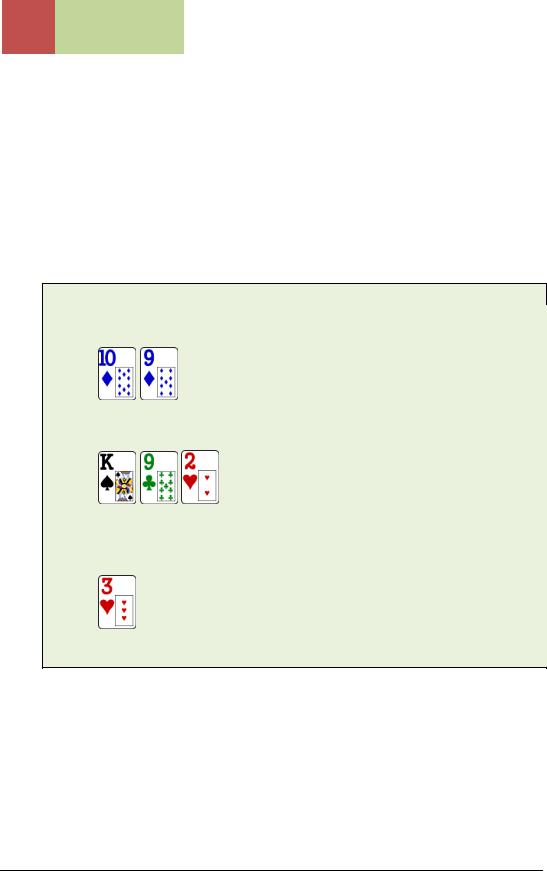
23 Math is Easy
Hand ranges also allow us to analyze a situation in a broader perspective. For example, if our maniacal Villain from the previous example 4-bets us and shows up with AA, it doesn’t mean that we made a bad read. We know that AA is only a small part of his range.
Sometimes he will show up with a good hand, but most of his range consists of much weaker holdings. As you can see, you estimate a player’s hand range based on his image, tendencies and history.
Hand ranges are dynamic and can change after any given action. Consider the following example.
100NL – 6 max. 100BB effective stacks.
Let say our TAG player raises to $4 from UTG and we call from the button with
The flop is
He c-bets full pot. His hand range has not changed because he will c-bet this dry flop nearly 100-percent of the time. We call. The turn is a
and he checks. At this point, his hand range changes.
Unless he is going for an unlikely check-raise, we can safely assume that he rarely has KK, 99, 22, and K9+ in his range. He would have bet those hands to try to extract value from a weaker Kx, TT-QQ, or 9x. Checking allows us to control the pot size and check behind with our weak hands. So his hand range has weakened, while ours has gone up relative to his holdings.
© 2010 Aaron Davis and Tri Nguyen - All Rights Reserved.
http://www.DailyVariance.com
23

24 Math is Easy
A good generalization to keep in mind is that if you think your opponent’s range is stronger than your hand, you want to fold more often. And if you think his range is weaker than your hand, you want to call or raise more.
© 2010 Aaron Davis and Tri Nguyen - All Rights Reserved.
http://www.DailyVariance.com
24
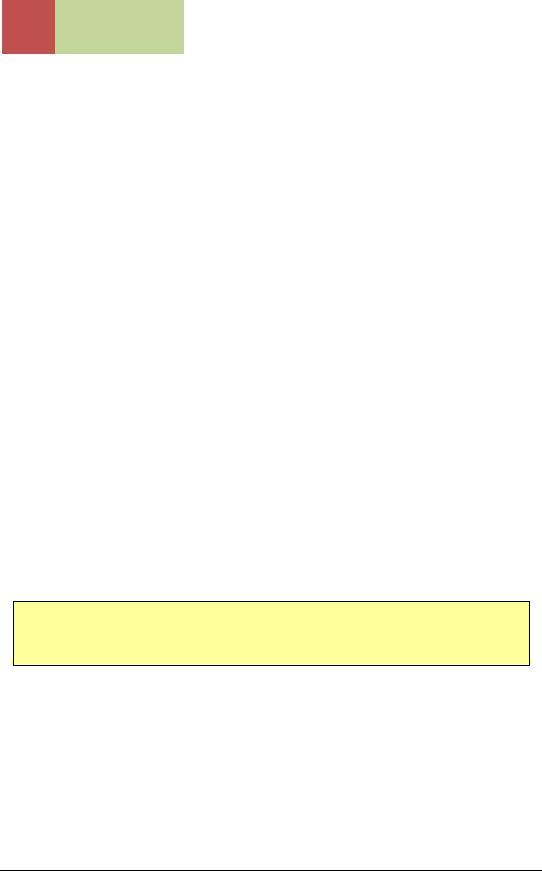
25 Math is Easy
The Fundamentals
If you’re not good with numbers, don’t worry. You only need to understand a few basic fundamentals of poker to become a great player. Once you learn these concepts, you will no longer have to worry about the mathematical aspects of poker.
Probability and Odds
Probability is the proportion of the time that something is likely to occur or has already occurred. It is usually expressed as a percentage (e.g., 40 percent) or a ratio indicating odds (e.g., 7:1). They are one and the same. For example, an open-ended straight draw has 31.5 percent equity on the flop, which is equivalent to saying it’s a 2.2:1 dog.
Percentages are very straightforward. The higher the percentage, the more often an event is likely to occur. Now let’s go over ratios.
There are two ways to describe a ratio. You can say it in terms of being a favorite or a dog, and there’s a significant difference between the two. The simplest thing to keep in mind is that when you’re a favorite, you’re ahead, and when you’re a dog, you’re behind.
Let’s look at a few examples.
To be a 2:1 favorite means that for every two times that you win, you lose once.
To be a 3:1 dog implies that you lose three times for every one time that you win.
Now, let’s say we want to convert a 4:1 dog to a percentage. To do that, we use the equation below:
Percentage = wins/(left number + right number)
Convert 4:1 dog to a percentage.
percentage = wins/(left number + right number)
=1/(4 + 1)
=1/5
=20%
Let’s have some more practice.
© 2010 Aaron Davis and Tri Nguyen - All Rights Reserved.
http://www.DailyVariance.com
25
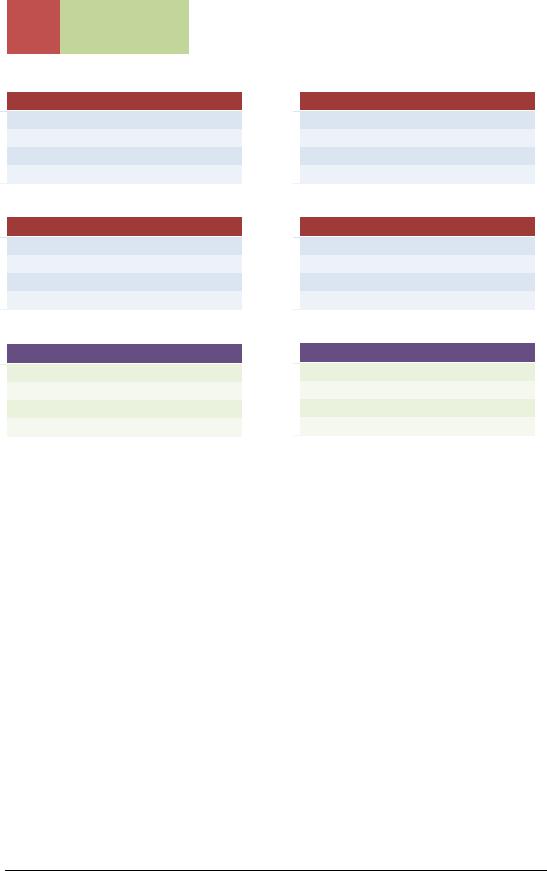
26 Math is Easy
 Convert 3:1 dog to percentage
Convert 3:1 dog to percentage
 = wins/(left number + right number)
= wins/(left number + right number)
 = 1/(3 + 1)
= 1/(3 + 1)
 = 1/4
= 1/4
 = 25%
= 25%
 Convert 2:1 favorite to percentage
Convert 2:1 favorite to percentage
 = wins/(left number + right number)
= wins/(left number + right number)
 = 2/(2 + 1)
= 2/(2 + 1)
 = 2/3
= 2/3
 = 67%
= 67%
 Convert 25% to ratio
Convert 25% to ratio
 = 25% = 25/100
= 25% = 25/100
 = 25 wins, 75 losses
= 25 wins, 75 losses
 = 25/75 = 1/3
= 25/75 = 1/3
 = 1:3 or 3:1 dog
= 1:3 or 3:1 dog
 Convert 2:1 dog to percentage
Convert 2:1 dog to percentage
 = wins/(left number + right number)
= wins/(left number + right number)
 = 1/(2 + 1)
= 1/(2 + 1)
 = 1/3
= 1/3
 = 33%
= 33%
 Convert 3:1 favorite to percentage
Convert 3:1 favorite to percentage
 = wins/(left number + right number)
= wins/(left number + right number)
 = 3/(3 + 1)
= 3/(3 + 1)
 = 3/4
= 3/4
 = 75%
= 75%
 Convert 37% to ratio
Convert 37% to ratio
 = 37% = 37/100
= 37% = 37/100
 = 37 wins, 63 losses
= 37 wins, 63 losses
 = roughly 40/60 = 4/6 = 2/3
= roughly 40/60 = 4/6 = 2/3
 = 2:3 or 3:2 dog
= 2:3 or 3:2 dog
© 2010 Aaron Davis and Tri Nguyen - All Rights Reserved.
http://www.DailyVariance.com
26
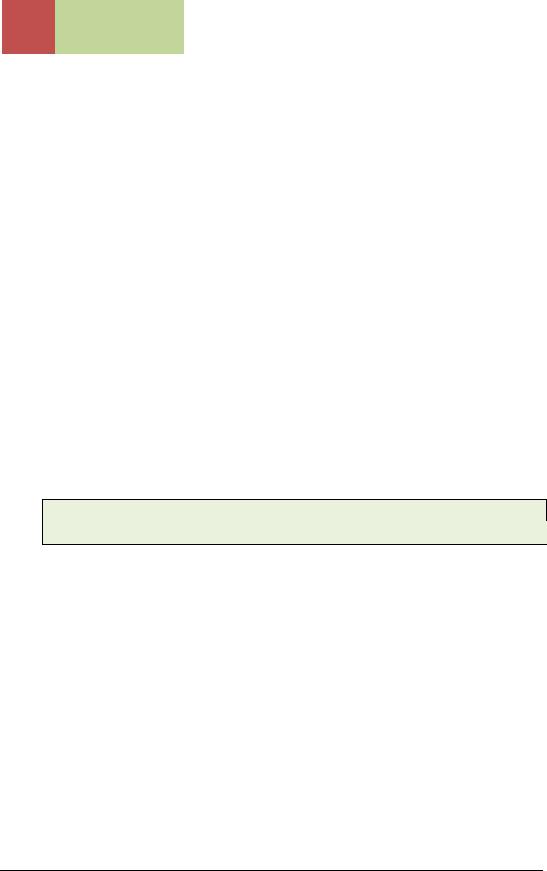
27 Math is Easy
Pot Odds
One of the essentials of poker, pot odds are something that every poker player should learn about. Whether you’re grinding it at a 10NL table or playing high-stakes, you have to know what pot odds are. We will cover two types of odds: immediate odds and implied odds. Knowing about odds allows us to determine if a call, bet, fold or raise is the most optimal play.
Immediate odds
Normally referred to as simply “odds”, immediate odds are how much you stand to win immediately in relation to what you have to risk, and is usually expressed as a ratio. Here are five simple steps we need to take to determine our pot odds.
1.Determine the original pot size.
2.Determine the amount we have to call.
3.Add up original size of pot and amount we have to call to get the Total Pot Size.
4.Express it as a ratio (Total Pot Size:Amount we have to call).
5.Convert it to a percentage.
Let’s apply this in a few examples.
Say we get to the river with top pair and there’s $50 in a pot. Villain bets $25. Do we have enough odds to call?
In order to know if you can profitably call here, you need to know your odds. To determine this, let’s follow the steps above.
1.Original size of pot = $50
2.Amount we have to call = $25
3.Original size of pot + amount we have to call = Total Pot Size $50 + $25 = $75
4.Total Pot Size:Amount we have to call 75:25, or 3:1 odds.
5.3:1 odds converts to 25 percent equity, which means if you are good here 25 percent of the time, you break even. If more than 25 percent, you stand to win money in the long run. With our top pair, we think we’re good here more than 25 percent of the time, so we call.
© 2010 Aaron Davis and Tri Nguyen - All Rights Reserved.
http://www.DailyVariance.com
27
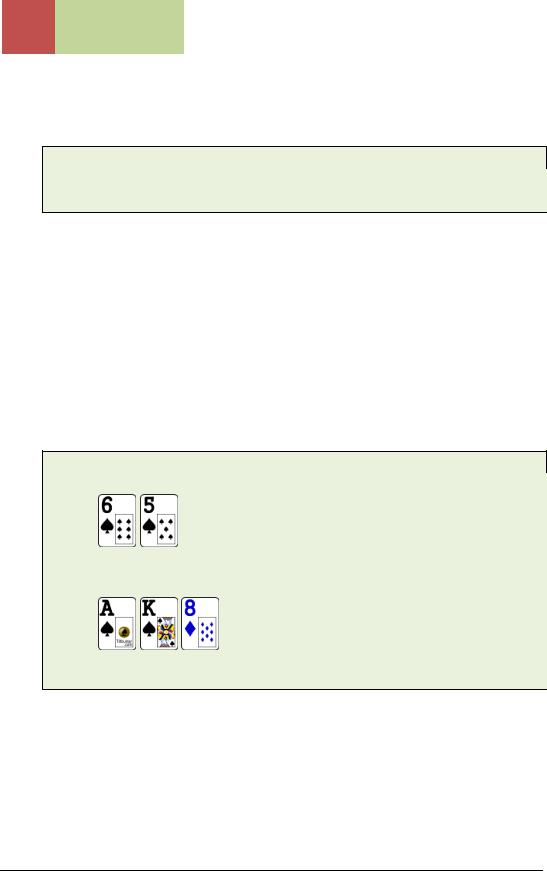
28 Math is Easy
Sometimes the numbers don’t round up perfectly, so we’ll have to do some adjusting. Here’s an example:
We get to the river with top pair and the pot is $70. Villain goes all-in for $65. We think we’re good here about 50 percent of the time. Do we have enough odds to call?
We need to call $65 to win $135 ($70 + $65). That’s 135:65. This can be a hard number to work with, so let’s round it up. $135 is about twice as big as $65, so we reduce that to about 2:1. We can convert 2:1 odds to about 33 percent equity. Since we think we’re good here at least 50 percent of the time, we can profitably call.
Hopefully, that wasn’t too hard. It does take a little getting used to in the beginning, but after a bit of practice, you can easily do this in seconds. If you have trouble understanding this, I suggest you read this section again to feel more comfortable. It took me a while getting used to it myself.
Let’s go over another example for some more practice.
100NL – 6 max. 100BB effective stacks.
We hold
and the flop is
Villain bets $15 into a $20 pot. Do we have the odds to call with our flush draw?
Let’s apply the steps from above:
1.Original size of pot = $20
2.Amount we have to call = $15
3.Original size of pot + amount we have to call = Total Pot Size $20 + $15 = $35
4.Total Pot Size:Amount we have to call
©2010 Aaron Davis and Tri Nguyen - All Rights Reserved.
http://www.DailyVariance.com
28
